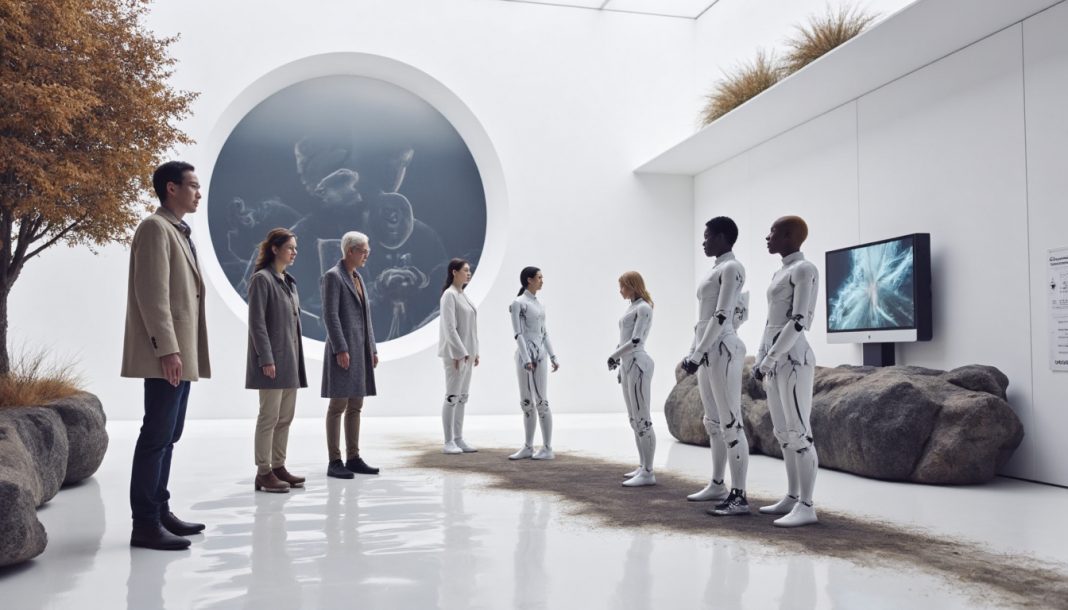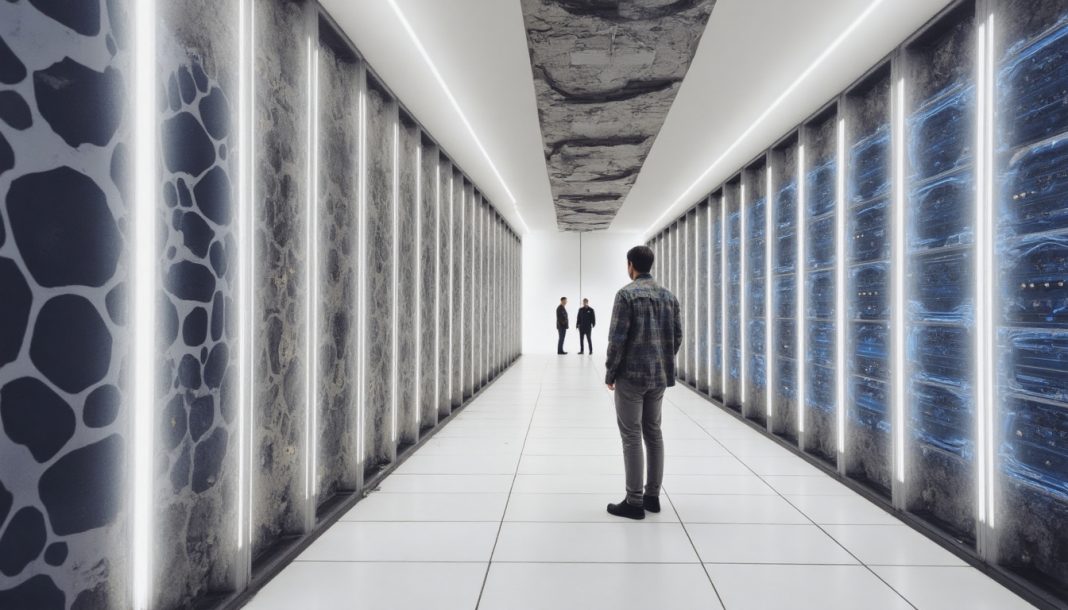Key Takeaways
The future of work isn’t about humans versus machines; it’s about building a powerful human-AI partnership. This new collaborative model is already helping professionals in every field work smarter, not just faster. Here are the core insights you need to get started.
-
Rethink the relationship from “human vs. machine” to a synergistic “human + machine” model, where you provide the strategy, creativity, and final judgment.
-
Assign tasks based on strengths by letting AI handle massive data analysis and repetitive work, freeing you to focus on complex problem-solving and building relationships.
-
Adopt a co-creation workflow by providing the initial prompt or strategy, using AI to generate a first draft, and then applying your expertise to refine and elevate the final output.
-
Focus on augmentation, not just automation by using AI to enhance your expertise, like a doctor using AI to spot anomalies, leading to higher-quality and more accurate results.
-
Use AI as your ultimate assistant to eliminate daily administrative drag like meeting summaries and email triage, which reclaims your mental energy for deep work.
-
Embrace the iterative learning loop by treating the first AI output as a starting point, not the final product, and using your feedback to guide it toward a better solution.
-
Measure what truly matters by looking beyond time saved to track improvements in the quality of your work, team engagement, and pace of innovation.
These takeaways are just the beginning; dive into the full article to see detailed case studies and a blueprint for building your own successful human-AI partnership.
Introduction
The conversation about AI often gets stuck on a single, anxious question: will it replace us?
But what if that’s the wrong question entirely?
Across industries, the smartest teams aren’t debating replacement. They’re pioneering a powerful new model of partnership, proving the most effective formula isn’t human vs. machine—it’s human + machine.
This isn’t a futuristic theory. It’s happening right now, unlocking unprecedented levels of creativity and efficiency for those who embrace it. This isn’t just about doing your old job faster; it’s about elevating your capabilities to tackle bigger, more meaningful challenges.
In this deep dive, we’ll explore stories from the frontlines of collaboration. You’ll see exactly how this partnership model is reshaping work in fields you might not expect.
We’ll cover:
- How doctors are using AI to make faster, more accurate diagnoses.
- The new creative process that helps agencies deliver groundbreaking campaigns.
- Practical ways to supercharge your own daily productivity.
- A clear blueprint for building an effective human-AI partnership on your team.
To understand how this synergy works in practice, we first need to redefine what teamwork looks like when one of your most valuable collaborators is an algorithm.
Redefining Teamwork: Understanding the Human-AI Partnership Model
Forget the outdated narrative of humans versus machines. The most impactful shift in today’s workplace is the move toward synergy, where AI acts as a powerful collaborator, not a competitor.
This isn’t about replacement; it’s about partnership. The new model is simple: it’s not human vs. machine, it’s human + machine.
From “Versus” to “Plus”: The New Collaborative Paradigm
Think of AI as a brilliant but hyper-specialized junior partner. It excels at tasks that require immense speed and scale—like sifting through mountains of data in seconds or recognizing subtle patterns humans might miss.
You, however, are the senior partner. You provide the strategic direction, contextual understanding, creativity, and ethical judgment. The AI processes the information, but you interpret the findings and make the final, critical call.
The Spectrum of Collaboration
This partnership isn’t a one-size-fits-all model. It exists on a spectrum, allowing you to choose the right level of collaboration for the task at hand.
- The Assistant: AI handles the repetitive, administrative work that drains your energy. Think automated scheduling, data entry, and updating profiles to free up your focus.
- The Analyst: AI processes vast datasets to surface insights, flag anomalies, and make preliminary assessments for your review, like in medical imaging or market research.
- The Co-Creator: AI actively participates in the creative process, generating first drafts, brainstorming ideas, and creating variations that you can then refine and guide.
Why This Partnership is the Future of Work
This trend is driven by tangible business benefits that are impossible to ignore. Teams that effectively blend human and AI talent are unlocking new levels of performance.
This collaboration allows you to automate the mundane and dedicate your expertise to uniquely human tasks, like building client relationships and complex problem-solving. Studies consistently show that human-AI teams don’t just work faster; they produce higher-quality, more creative outcomes than either humans or AI working alone.
The goal isn’t just to do your old job faster. It’s to leverage a partnership that can elevate your capabilities, allowing you to tackle bigger challenges and create more value than ever before.
Stories from the Clinic: AI as a Diagnostic and Care Partner
In the high-stakes world of healthcare, the human-AI partnership isn’t a future concept—it’s improving outcomes right now.
This isn’t about replacing doctors. It’s about giving them superpowers by handling the data-heavy lifting, allowing them to focus on what humans do best: critical thinking, empathy, and making life-or-death decisions.
The AI-Augmented Radiologist: Seeing the Unseen
Picture a radiologist reviewing a complex MRI. Instead of starting from a blank slate, they’re working alongside a powerful AI partner that has already done the initial analysis.
This synergistic workflow is a perfect model of collaboration:
- An AI system rapidly analyzes thousands of scan images in minutes, a task that could take a human hours.
- It precisely flags potential tumors or subtle abnormalities that might be overlooked by the human eye under pressure.
- The human radiologist then applies their deep medical expertise and patient context to review the AI’s findings and make the final, critical diagnosis.
This teamwork reduces diagnostic errors and dramatically shortens the anxious wait for results, allowing doctors to focus their attention on the most complex cases.
Streamlining Operations for Better Patient Outcomes
The partnership extends far beyond diagnostics. Leading institutions like Seattle Children’s Hospital and Highmark Health are using AI to tackle administrative burnout and optimize hospital-wide efficiency.
AI is taking on time-consuming tasks like:
- Automating the creation of patient visit summaries, freeing clinicians from hours of paperwork.
- Powering smart triage systems to help prioritize incoming patient care more effectively.
With their time freed up, clinicians can focus on more meaningful interactions with patients, verify the accuracy of AI-generated summaries, and provide nuanced oversight of the overall care plan.
From Prediction to Explanation in Research
In biomedical research, it’s not enough for an AI to predict an adverse drug reaction. For the partnership to work, researchers need to understand why.
This is where explainable AI (XAI) builds essential trust. The AI provides both a prediction and the potential biological pathways causing it. The human researcher then uses their scientific expertise to investigate the proposed mechanism, verify its plausibility, and design the next set of experiments. This iterative loop dramatically accelerates the pace of discovery.
The most effective partnerships in medicine aren’t about automation alone. They are about augmenting clinical judgment to deliver faster, safer, and more personalized care.
The New Creative Process: AI as a Strategic Muse and Production Powerhouse
Forget the idea that AI is the death of creativity. For smart agencies and creators, it’s the ultimate strategic partner, transforming the creative process from a solitary struggle into a dynamic collaboration.
This partnership isn’t about replacing human ingenuity; it’s about amplifying it with speed and data.
Case Study: The Supergood Agency Model
Picture this: a creative agency that delivers campaigns twice as fast and twice as effective as traditional models.
That’s the reality for the Supergood agency, which has woven AI into its core workflow. Their process is a masterclass in human-AI synergy:
-
Insight Generation: AI sifts through market data and simulates audience reactions, uncovering non-obvious insights that a human team might miss.
-
Brief Generation: Human strategists use these fresh insights to prompt the AI, generating initial creative briefs and campaign concepts in minutes, not days.
-
Co-Creation: Creatives work alongside AI tools, iterating on copy and visuals in real-time. The AI provides the variations; the humans provide the vision, refinement, and final strategic sign-off.
From Blank Page to Polished Draft in Record Time
For marketers, writers, and designers, the biggest hurdle is often just getting started. Generative AI acts as a tireless brainstorming partner, helping you conquer the dreaded blank page forever.
The workflow is simple but powerful:
- You provide the strategy: Start with a clear prompt, a rough outline, or your key messaging points.
- AI generates the foundation: The tool produces a first draft, multiple headline options, or several design mockups to get the ball rolling.
- You provide the magic: This is where the human creator takes over, editing for brand voice, adding storytelling nuance, and ensuring the final output meets strategic goals.
This isn’t just a theory. Studies show that human + AI teams consistently outperform either working alone, making the case for collaboration undeniable.
The takeaway is clear: AI isn’t here to take your job, it’s here to take the parts you probably don’t like. By handling the initial research and drafting, it empowers you to focus on the uniquely human skills of high-level strategy, creative direction, and making a genuine connection.
Supercharging Daily Productivity: AI as the Ultimate Executive Assistant
This section makes the human-AI partnership real and tangible for every professional. Let’s move past abstract ideas and focus on accessible tools that reclaim your most valuable resources: time and mental energy.
Picture this: your daily work, but without the soul-crushing administrative drag. That’s the promise of a well-managed AI partnership.
Beyond Siri and Alexa: AI in the Professional Workspace
The conversation about AI assistants has moved far beyond setting kitchen timers. In a business context, these tools are designed to eliminate the cognitive drag from routine tasks, freeing you up for deep work.
Think of them as a specialized support team that handles the background noise.
Practical examples are already here and accessible:
- Meeting Assistants: Automatically transcribe calls, pinpoint action items, and generate concise summaries you can actually use.
- Smart Email Clients: Triage your inbox, draft replies based on context, and help schedule follow-ups without the back-and-forth.
- Project Management Bots: Automate routine status updates and flag resource conflicts before they become problems.
Transforming the Recruitment Workflow
For a powerful real-world example, look at the recruitment industry. A firm like Allegis Group shows how this partnership transforms an entire department.
The old way meant recruiters spent countless hours on manual, repetitive work: updating candidate profiles, running simple keyword searches, and drowning in scheduling logistics.
The new partnership completely redefines these roles.
- AI’s Role: It automatically updates candidate profiles with new skills, intelligently matches candidates to jobs using nuanced criteria, and handles the initial interview scheduling.
- Human’s Role: Recruiters are freed to focus on what matters—building genuine relationships with top candidates, conducting insightful interviews, and making the final, critical hiring decisions.
The result isn’t just a faster hiring cycle. It’s a more human-centered candidate experience, which is a massive competitive advantage.
This partnership model proves that the goal isn’t just to do the same work faster. It’s to empower you and your team to do more meaningful, high-impact work by automating the rest.
The Blueprint for Success: Core Principles of an Effective Human-AI Partnership
You’ve seen the stories from the frontlines. Now, let’s translate those successes into a practical blueprint you can use to build your own powerful human-AI partnerships.
Moving from theory to practice comes down to four core principles.
Principle 1: Assign the Right Task to the Right Partner
The foundation of any successful partnership is assigning the right task to the team member best suited for it. Don’t ask your AI to handle a sensitive client call, and don’t waste your own time on tasks it can do in seconds.
-
Tasks for AI: Large-scale data analysis, pattern identification, generating first drafts, and handling repetitive administrative work.
-
Tasks for Humans: Setting strategy, handling ambiguity, providing ethical oversight, building relationships, and making the final creative or strategic judgment.
Principle 2: Build Trust Through Transparency
You can’t collaborate with a “black box.” For a partnership to thrive, you need to understand and have confidence in your AI partner’s output.
This is where Explainable AI (XAI) becomes crucial. As we saw in biomedical research, the most powerful models don’t just give you an answer; they show their work. Start by using AI for low-stakes tasks to build familiarity and confidence before moving to mission-critical applications.
Principle 3: Embrace the Learning Loop
Interacting with AI is a new skill. Think of it less like giving a command and more like having a dialogue.
The first output is rarely the final product. The real value emerges from the iterative loop of human feedback, refined prompts, and AI-generated improvements. Be patient with the learning curve—every imperfect output is a lesson in how to be a better collaborator.
Principle 4: Measure What Truly Matters
It’s easy to focus on simple metrics like “time saved,” but the real impact goes much deeper. Look for the second-order benefits that signal a truly effective partnership.
- Quality of Output: Is the final work more accurate, creative, or insightful?
- Employee Experience: Are your teams more engaged and less burned out on tedious work?
- Pace of Innovation: Are you generating and testing new ideas faster than before?
The ultimate goal isn’t just to do the same work faster. It’s to empower your team to do entirely new and more valuable work that was never possible before.
Conclusion
The stories from the frontlines share a single, powerful message: the human-AI partnership has moved from a theoretical concept to a practical, career-defining strategy. This isn’t about simply working faster; it’s about fundamentally elevating the value and creativity of your work.
By combining your strategic vision with AI’s processing power, you unlock a new level of performance that neither can achieve alone.
Here’s how you can start building that partnership today:
-
Focus on Augmentation, Not Just Automation: The real win isn’t just offloading tasks, but using AI to enhance your uniquely human skills like critical thinking, creativity, and strategic oversight.
-
Be the Strategist: Your most vital role is providing the context, setting the goals, and making the final judgment call. Assign AI the data-heavy lifting, but always keep your hands on the strategic wheel.
-
Embrace the Learning Loop: Your first prompt won’t be perfect. Treat every interaction as a dialogue where you learn to guide your AI partner toward better, more refined outcomes.
Your journey into this new era of work begins with a single step. This week, identify one repetitive, low-stakes task that drains your energy—whether it’s summarizing notes, drafting basic emails, or finding data points.
Explore one tool designed to assist with that specific job. Don’t aim for perfection; aim for practice. See it as your first conversation with a new, powerful collaborator.
This is more than a productivity hack; it’s a redefinition of potential. By mastering this partnership, you’re not just preparing for the future of work—you are actively building it.





